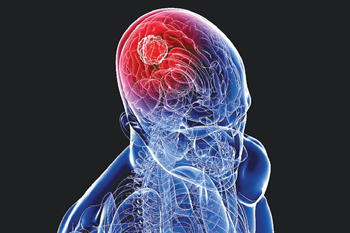Washington, Dec 27: Ever wondered how can you recognise whether your friend is happy or sad, at a glance? Also how can you recognise a friend, even if you haven't seen him/her in a decade?
 Answering to all these, a recent study finds out how the brain recognise familiar faces with efficiency and ease, despite extensive variation in how they appear.
Answering to all these, a recent study finds out how the brain recognise familiar faces with efficiency and ease, despite extensive variation in how they appear.
Researchers at Carnegie Mellon University in the US are closer than ever before to understand the neural basis of facial identification.
The study, published in the journal of Proceedings of the National Academy of Sciences (PNAS), used highly sophisticated brain imaging tools and computational methods to measure the real-time brain processes that convert the appearance of a face into the recognition of an individual.
“Our results provide a step towards understanding the stages of information processing that begin when an image of a face first enters a person's eye and unfold over the next few hundred milliseconds, until the person is able to recognize the identity of the face," said study author Mark D. Vida.
To determine, how the brain rapidly distinguishes faces, they researchers scanned the brains of four people using magnetoencephalography (MEG).
MEG allowed them to measure ongoing brain activity throughout the brain on a millisecond-by-millisecond basis while the participants viewed images of 91 different individuals with two facial expressions each: happy and neutral.
The participants indicated that when they recognised that the same individual's face was repeated, regardless of expression.
The MEG scans allowed the researchers to map out, for each of many points in time, which parts of the brain encode appearance-based information and which encode identity-based information.
The team also compared the neural data to behavioral judgments of the face images from humans, whose judgments were based mainly on identity-based information.
Then, they validated the results by comparing the neural data to the information present in different parts of a computational simulation of an artificial neural network that was trained to recognise individuals from the same face images.
“Combining the detailed timing information from MEG imaging with computational models of how the visual system works has the potential to provide insight into the real-time brain processes underlying many other abilities beyond face recognition," said another researcher David C. Plaut.
The researchers are hopeful that the findings might be used in the near future to locate the exact point at which the visual perception system breaks down in different disorders and injuries, ranging from developmental dyslexia to prosopagnosia or face blindness.






Comments
xtuhavo
http://www.lubpsico.es/adidas-neo-mujer-069.html
http://www.luismesacastilla.es/826-nike-roshe-mujer-zalando.php
http://www.lubpsico.es/adidas-los-angeles-342.html
http://www.denisemilani.es/828-nike-zapatillas-pegasus.php
http://www.el-codigo-promocional.es/080-reebok-white.aspx
Polo Abercrombie Hombre
Saucony Hurricane Iso 2
Nike Free 5.0 Mujer Chile
Mbt Online Comprar
Zapatos Vans Rojos
Add new comment